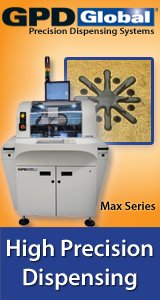Printed Circuit Board Assembly & PCB Design Forum
SMT electronics assembly manufacturing forum.
- SMTnet
- »
- Electronics Forum
- »
- SN100C wetting problems
SN100C wetting problems
Views: 5322
![]() Dear all,
we are using the lead-free SN100C solder alloy ...
- Jul 13, 2007
by
Dboudreau
Dear all,
we are using the lead-free SN100C solder alloy ...
- Jul 13, 2007
by
Dboudreau
![]()
![]()
![]() There are a lot of areas that could be leading to this probl...
- Jul 13, 2007
by
jdumont
There are a lot of areas that could be leading to this probl...
- Jul 13, 2007
by
jdumont
![]()
![]()
![]() As in more dwell?
We see the same problem with through ho...
- Jul 13, 2007
by
James
As in more dwell?
We see the same problem with through ho...
- Jul 13, 2007
by
James
![]()
![]()
![]() We've experienced this issue with SN100.
A couple of thin...
- Jul 13, 2007
by
robgd3
We've experienced this issue with SN100.
A couple of thin...
- Jul 13, 2007
by
robgd3
![]()
![]()
![]() I have zero experience with SN100c, but hey,
how much diffe...
- Jul 16, 2007
by
Dirk Nuendyke
I have zero experience with SN100c, but hey,
how much diffe...
- Jul 16, 2007
by
Dirk Nuendyke
![]()
![]()
![]() We haven't used no-lead yet so I can't speak to the specific...
- Jul 17, 2007
by
Steve Thomas
We haven't used no-lead yet so I can't speak to the specific...
- Jul 17, 2007
by
Steve Thomas
![]()
![]()
![]() You want to know which flux will over come thermal mass prob...
- Jul 17, 2007
by
Hussman
You want to know which flux will over come thermal mass prob...
- Jul 17, 2007
by
Hussman
![]()
![]()
![]() SOOOO true!!!
...
- Jul 19, 2007
by
aisart
SOOOO true!!!
...
- Jul 19, 2007
by
aisart
![]()
![]()
![]() Well, everyone has provided good advice, but if you are look...
- Jul 31, 2007
by
Rafael
Well, everyone has provided good advice, but if you are look...
- Jul 31, 2007
by
Rafael
![]()
- SMTnet
- »
- Electronics Forum
- »
- SN100C wetting problems







